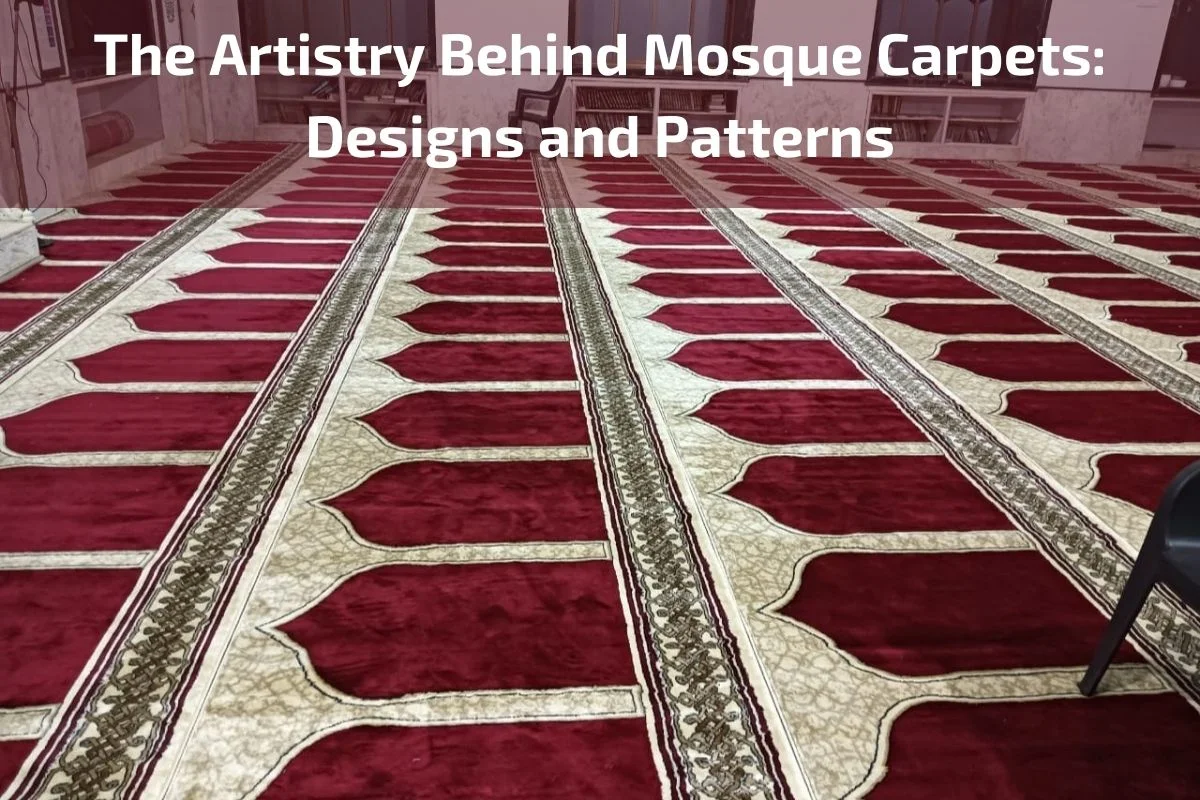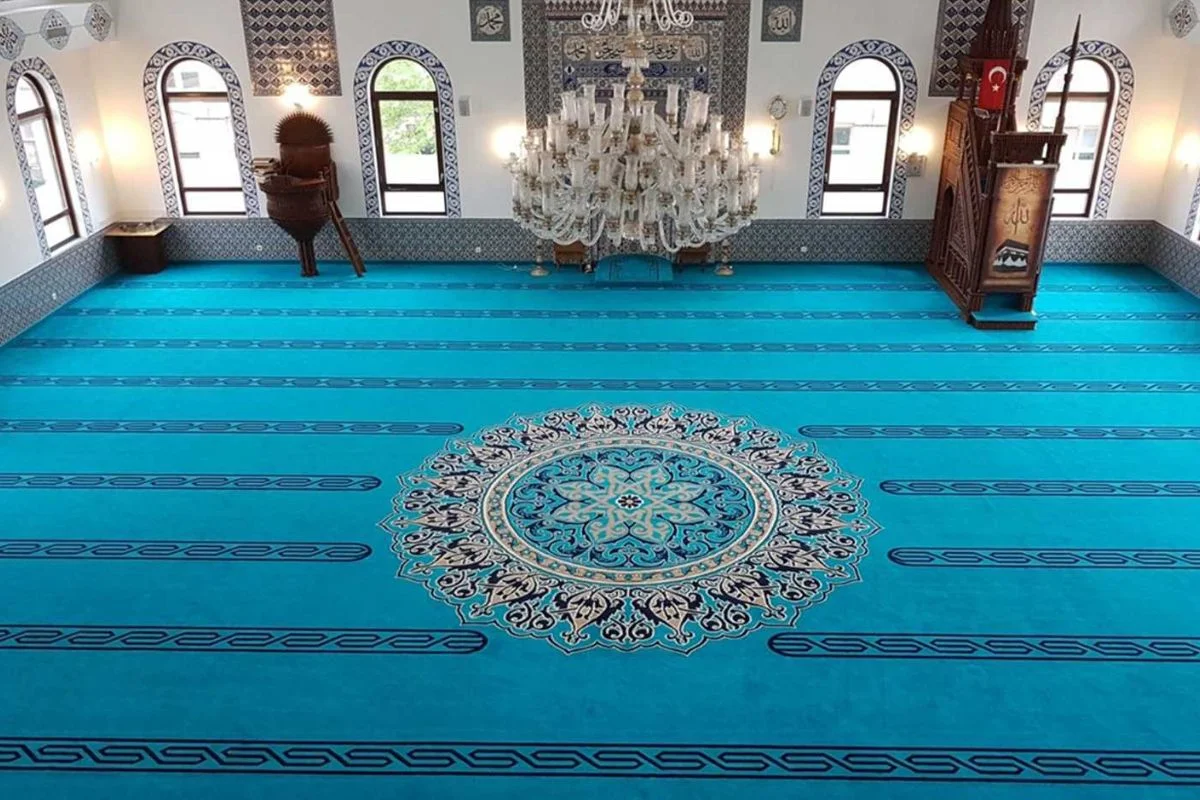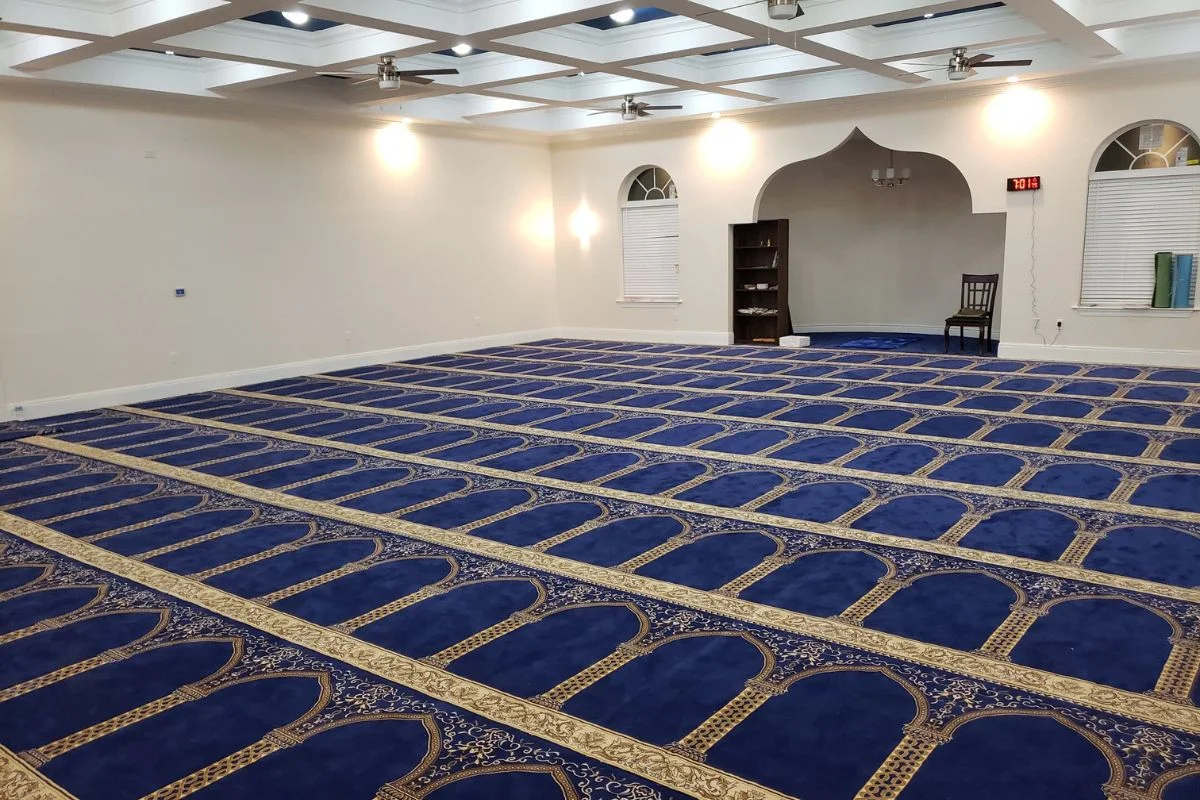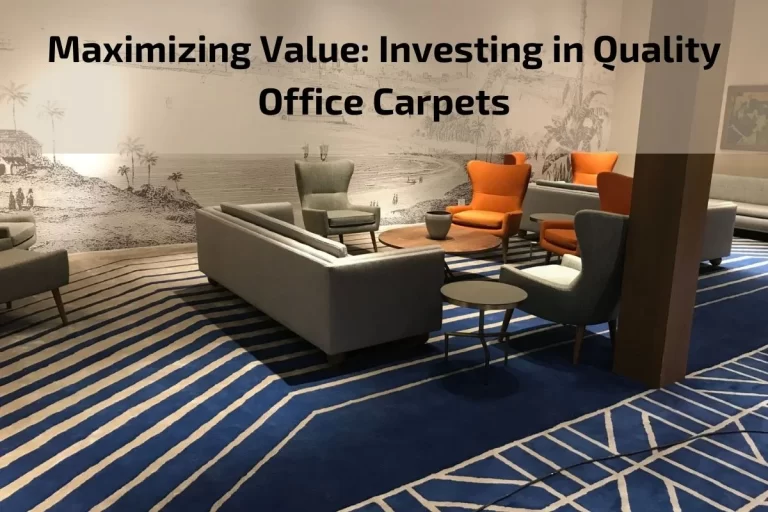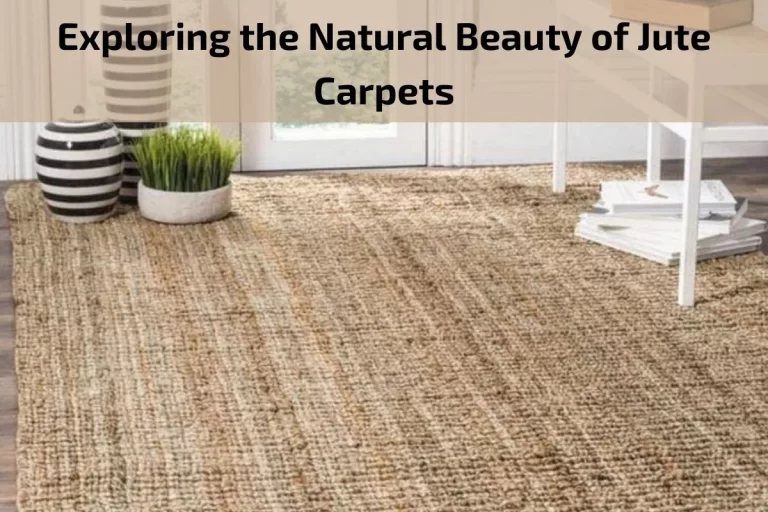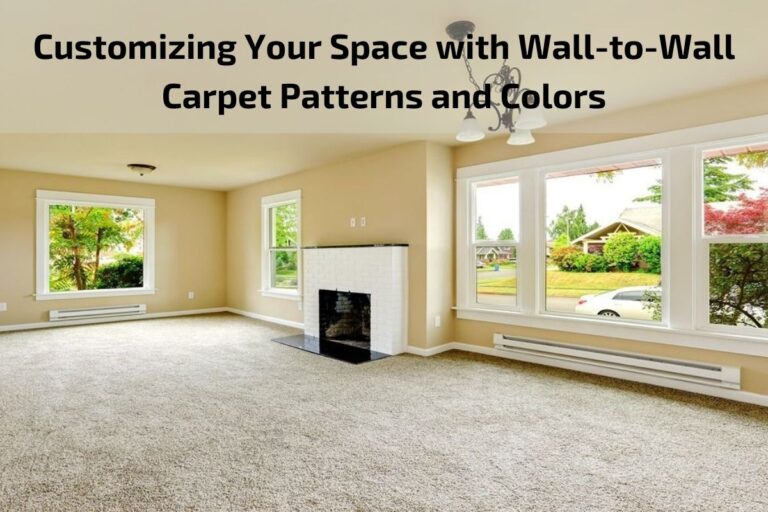The artistry behind mosque carpets transcends mere functionality, embodying centuries of cultural heritage, craftsmanship, and spiritual symbolism. Adorning the floors of mosques around the world, these carpets serve as more than just decorative elements; they are woven expressions of devotion and reverence, imbued with profound significance.
Intricately crafted with meticulous attention to detail, mosque carpets feature a rich tapestry of designs and patterns that reflect the diverse cultural influences and artistic traditions of the regions they originate from. From the geometric motifs of Islamic geometry to the floral patterns inspired by nature, each design element carries symbolic meaning and spiritual resonance.
Brief overview of the importance of mosque carpets
Mosque carpets hold profound significance in Islamic culture and worship, serving as integral components of mosque architecture and spiritual practice. These carpets play a pivotal role in creating a sacred and reverent atmosphere within the mosque, facilitating prayer rituals and fostering a sense of unity and devotion among worshippers.
The importance of mosque carpets lies in several key aspects:
Enhancing Spiritual Experience: Mosque carpets provide a clean and comfortable surface for worshippers to perform their prayers, prostrations, and other religious rituals. The softness and insulation they offer help create a conducive environment for spiritual reflection and concentration.
Defining Sacred Spaces: Mosque carpets delineate specific areas within the mosque reserved for prayer, such as the prayer hall or mihrab (prayer niche). They visually demarcate sacred spaces and contribute to the organization and layout of the mosque’s interior architecture.
Promoting Unity and Equality: When worshippers stand shoulder to shoulder on the mosque carpet during congregational prayers, they symbolize the equality and unity of all individuals before Allah (God). Mosque carpets erase distinctions of wealth, status, and background, fostering a sense of communal solidarity and brotherhood among worshippers.
Reflecting Cultural Identity: Mosque carpets often feature intricate designs, motifs, and patterns that reflect the artistic traditions and cultural heritage of the region where the mosque is located. These carpets serve as expressions of local identity and aesthetics, connecting worshippers to their cultural roots and shared history.
Providing Comfort and Warmth: In addition to their symbolic and spiritual significance, mosque carpets offer practical benefits such as insulation against cold floors and protection from discomfort during prolonged periods of prayer. The soft texture and warmth of the carpet create a welcoming and hospitable environment for worshippers of all ages.
Significance and Symbolism of Mosque Carpets
The significance and symbolism of mosque carpets in Islamic culture and worship are profound, carrying spiritual, cultural, and communal meanings that enrich the experience of prayer and reflection. Here are some key aspects of the significance and symbolism of mosque carpets:
Sacred Space: Mosque carpets delineate the sacred space within the mosque where prayers are performed. They mark the area where worshippers stand, kneel, and prostrate in devotion to Allah (God) during congregational prayers and individual supplications.
Unity and Equality: Mosque carpets symbolize the unity and equality of all worshippers before Allah. When Muslims stand shoulder to shoulder on the mosque carpet during congregational prayers, they demonstrate their commitment to communal worship and solidarity, transcending differences of race, ethnicity, and social status.
Focus and Concentration: The uniformity and simplicity of mosque carpets help worshippers maintain focus and concentration during prayer. The absence of distracting patterns or designs allows worshippers to direct their attention inward, fostering a sense of spiritual connection and mindfulness.
Cultural Identity: Mosque carpets often feature intricate designs, motifs, and patterns that reflect the artistic traditions and cultural heritage of the region where the mosque is located. These designs serve as expressions of local identity and aesthetics, connecting worshippers to their cultural roots and shared history.
Spiritual Reflection: The soft texture and warmth of mosque carpets provide a comfortable and inviting surface for worshippers to engage in prayer, meditation, and spiritual reflection. The act of kneeling and prostrating on the carpet reinforces the humility and submission inherent in Islamic worship.
Tradition and Continuity: Mosque carpets represent a tradition of craftsmanship and artistry that dates back centuries. The weaving and production of mosque carpets have been passed down through generations, preserving cultural knowledge and skills that celebrate the beauty and splendor of Islamic art and design.
Respect and Reverence: Mosque carpets are treated with utmost respect and reverence by worshippers, who recognize their sacred significance and role in facilitating the worship experience. Special care is taken to keep mosque carpets clean and well-maintained, ensuring they remain a symbol of purity and devotion.
Types of Mosque Carpets
Mosque carpets come in various types, each with its own characteristics, designs, and materials. Here are some common types of mosque carpets:
Traditional Woolen Carpets: Traditional woolen mosque carpets are woven from natural wool fibers and are known for their durability, warmth, and resilience. These carpets often feature intricate geometric patterns, floral motifs, and Islamic calligraphy designs, reflecting the rich artistic heritage of Islamic culture.
Silk Carpets: Silk mosque carpets are considered luxurious and are prized for their softness, sheen, and intricate detailing. Silk fibers are delicately woven into elaborate designs and patterns, creating carpets that are both visually stunning and tactilely pleasing. Silk carpets are often used in mosques with a higher budget and for special occasions.
Prayer Rug Carpets: Prayer rug carpets are smaller in size compared to traditional mosque carpets and are designed for individual use during prayers. These carpets typically feature a mihrab (prayer niche) design, which indicates the direction of the Kaaba in Mecca, towards which Muslims face during prayer. Prayer rug carpets are portable and often used by worshippers in mosques and at home.
Machine-Made Carpets: Machine-made mosque carpets are mass-produced using automated weaving techniques and synthetic fibers such as nylon or polyester. While less expensive than traditional handmade carpets, machine-made mosque carpets offer durability and easy maintenance. They come in a variety of designs and colors, catering to different aesthetic preferences and budget considerations.
Hand-Knotted Carpets: Hand-knotted mosque carpets are crafted using traditional weaving techniques by skilled artisans. Each carpet is meticulously hand-woven knot by knot, resulting in intricate patterns and designs that are unique to each piece. Hand-knotted carpets are known for their superior quality, durability, and artistic craftsmanship.
Flatweave Carpets: Flatweave mosque carpets are woven on a loom using a flatweave technique, resulting in a thin and lightweight carpet that is easy to handle and maintain. These carpets are often used in mosques with high foot traffic, as they are durable and resistant to wear and tear.
Customized Carpets: Some mosques opt for customized carpets that are tailored to their specific design requirements and architectural features. Customized mosque carpets may feature personalized patterns, colors, and sizes to complement the overall aesthetic of the mosque interior.
Choosing the Right Mosque Carpet
Choosing the right mosque carpet is a crucial decision that involves considering various factors to ensure it complements the mosque’s aesthetics, functionality, and overall ambiance. Here are some key considerations when selecting a mosque carpet:
Size and Dimensions: Determine the size and dimensions of the carpet needed to cover the designated prayer area or main prayer hall of the mosque. Measure the space accurately to ensure the carpet fits snugly without leaving gaps or excess material.
Design and Patterns: Consider the design and patterns of the carpet in relation to the mosque’s architectural style and interior decor. Choose patterns and motifs that harmonize with the overall aesthetic of the mosque while reflecting Islamic art and cultural traditions.
Color Palette: Select a color palette that enhances the visual appeal of the mosque interior and creates a serene and inviting atmosphere for worshippers. Consider the natural lighting conditions and existing color scheme of the mosque when choosing carpet colors.
Material and Quality: Pay attention to the material and quality of the carpet, as it directly impacts durability, comfort, and maintenance. Opt for high-quality materials such as wool, silk, or synthetic fibers that are easy to clean, resilient to wear and tear, and provide adequate cushioning for worshippers.
Durability and Longevity: Choose a mosque carpet that is durable and long-lasting, capable of withstanding heavy foot traffic and frequent use without showing signs of wear or deterioration. Consider factors such as pile density, weave type, and backing material to assess the carpet’s durability.
Comfort and Safety: Prioritize the comfort and safety of worshippers by selecting a mosque carpet that offers adequate cushioning, traction, and insulation against cold floors. Ensure the carpet is slip-resistant and free from allergens or irritants that may cause discomfort to worshippers.
Budget and Affordability: Set a budget for the mosque carpet and explore options that offer the best value for money without compromising quality or aesthetics. Consider long-term maintenance costs and invest in a carpet that offers durability and performance over time.
Cultural and Religious Considerations: Respect cultural and religious traditions when choosing a mosque carpet, considering symbolic meanings and cultural significance associated with certain designs, patterns, and materials. Consult with mosque leaders, architects, or interior designers to ensure the carpet aligns with cultural sensitivities and religious practices.
Installation and Maintenance: Evaluate installation requirements and maintenance considerations before finalizing the choice of mosque carpet. Ensure the carpet can be installed easily and securely, and inquire about recommended cleaning and maintenance practices to preserve its appearance and functionality.
Maintenance and Care of Mosque Carpets
Maintaining and caring for mosque carpets is essential to preserve their beauty, longevity, and functionality. Proper maintenance practices help ensure that the carpets remain clean, hygienic, and safe for worshippers. Here are some tips for the maintenance and care of mosque carpets:
Regular Vacuuming: Vacuum mosque carpets on a regular basis to remove dust, dirt, and debris that accumulate on the surface. Use a vacuum cleaner with a brush attachment or a suction-only vacuum to avoid damaging the delicate fibers of the carpet.
Immediate Spot Cleaning: Attend to spills and stains promptly to prevent them from setting into the carpet fibers. Blot the affected area with a clean, dry cloth or paper towel to absorb excess liquid, then gently dab the stain with a mixture of mild detergent and water. Avoid rubbing or scrubbing the stain, as this can spread it further and damage the fibers.
Deep Cleaning: Periodically, deep clean mosque carpets using professional carpet cleaning services or equipment. Consider steam cleaning or hot water extraction methods to remove embedded dirt, allergens, and odors from the carpet fibers effectively. Follow manufacturer recommendations and consult with carpet cleaning professionals for best results.
Avoid Moisture: Prevent moisture accumulation on mosque carpets by maintaining proper ventilation and humidity levels within the mosque. Use moisture-absorbing mats or rugs at entryways and high-traffic areas to prevent water from being tracked onto the carpet. Address leaks or spills promptly to prevent mold and mildew growth.
Rotate Carpets: Rotate mosque carpets periodically to ensure even wear and tear and prevent permanent indentations or patterns from forming in high-traffic areas. Alternate the placement of prayer rugs and mats to distribute weight evenly across the carpet surface.
Protective Measures: Place furniture coasters or pads under the legs of heavy furniture to prevent indentations and protect the carpet from damage. Use area rugs or runners in areas of heavy foot traffic to reduce wear and tear on the mosque carpet.
Professional Inspection: Schedule periodic inspections by professional carpet cleaners or maintenance personnel to assess the condition of mosque carpets and identify any signs of damage or deterioration. Address any issues promptly to prevent further damage and prolong the lifespan of the carpets.
Educate Worshippers: Educate worshippers about proper etiquette and care practices for mosque carpets, encouraging them to remove shoes before entering the prayer area and avoid bringing food or beverages onto the carpeted surface. Promote a culture of cleanliness and respect for mosque facilities among worshippers.
Conclusion
In conclusion, the maintenance and care of mosque carpets play a vital role in preserving their beauty, functionality, and significance within the sacred space of the mosque. By implementing regular cleaning routines, addressing spills and stains promptly, and scheduling professional deep cleanings as needed, mosque administrators can ensure that the carpets remain clean, hygienic, and safe for worshippers.

